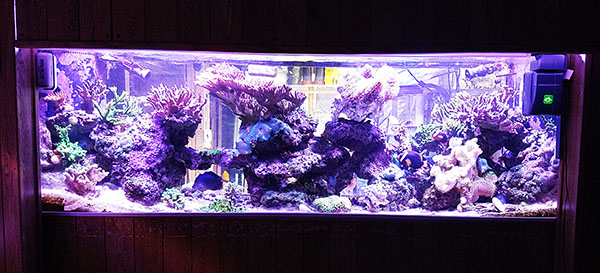Recently I had an urge to get back into keeping anemones and planned on setting up an anemone-specific aquarium with the 90-gallon tank I resealed. I knew I wanted to start looking at what has been out in the market recently and understand in what state of health they have been received at the local fish stores.
Based on the symptoms I saw—gaping mouths, deflated bodies, and some that looked okay but experienced inflate/deflate cycles—I researched what is needed to save these beautiful creatures and give them a fighting chance. Anemones in general are typically poor shippers, so it’s prudent to do our best to care for them as soon as possible.
I stumbled upon an awesome old thread on one of the popular forums from 2014 by Minh (OrionN), which outlined his “Protocol for using antibiotics to treat infected anemones.” Working with other anemone enthusiasts, he documented a treatment method that utilizes one of the commonly available antibiotics named Ciprofloxacin (Cipro). Two other alternatives were mentioned, but I will focus on Cipro.
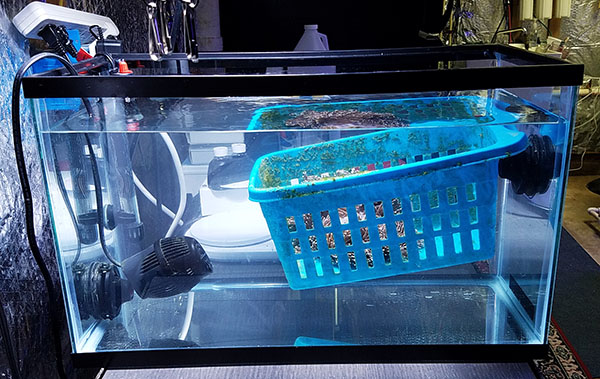
Materials needed
- 10-gallon tank
- Small powerhead
- 50w heater
- Plastic basket from the dollar store (I personalized this since it made it easier to transport the specimen in and out of the tank.)
- Small plastic container sized to hold the anemone basket temporarily with water
- High-output, full-spectrum lighting (I used my old metal halide fixture.)
- Ciprofloxacin tablets (Comes in 250 mg or 500 mg tablets and ordered online.)
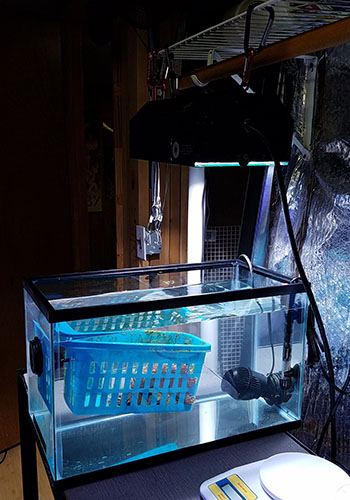
Methodology
Minh described his procedure as 7 x 24-hour cycles in tank water with 250 mg of Cipro dissolved in it. Start the treatment at an evening time since light will degrade the antibiotic over time.
- Fill tank with salt water, and maintain temperature and salinity. (I used water from my display tank in order to achieve a daily 10-gallon water change and get it used to my system water parameters.)
- Dissolve 250 mg of the antibiotic tablet by rubbing it with your fingers in front of the powerhead.
- Place/acclimate the specimen into the basket within the tank.
- Aim enough flow toward the anemone, but not direct laminar flow. (My basket helped disperse the flow and provided removable fastening surface during water changes.)
- Turn on the lights and leave on for 12 out of 24 hours in the morning.
Repeat the cycle with a 100% water change and a new dosage of 250 mg of Cipro daily. Use only the light to supplement energy to the anemone since you cannot feed during this period. If the anemone discharges waste early within any 24-hour cycle, an additional water change and dosage need to be done to keep the ammonia level low.
Depending on the seriousness of the infection, the key symptom to look for is when the anemone stops deflating and stays plumped up with a tight mouth. If 3 “blackout periods” go by and the mouth is still not tight, you may need to increase the daily dosage to 500 mg of antibiotic.
Caution
Minh warned to keep the treatment up for at least 3 days after the anemone stops deflating since ending the process too early can result in the infection returning and the bacteria now immune to the original dosage you had just performed. It’s pretty much the same instructions my doctor gives me when I need antibiotic treatment.
I had the anemone in the basket for a week in my main display tank but then noticed the inflate/deflate cycle occurring. The anemone stayed relatively semi-deflated most of the time. Anemones usually go through an inflate/deflate cycle to expel wastes, but this caused some concern since the mouth started to gape.
Below are photos of my Heteractis magnifica going through the treatment (Days 1-7), and it’s literally a lifesaver! Note that on Day 1 the mouth was very loose and it started to expose its guts.
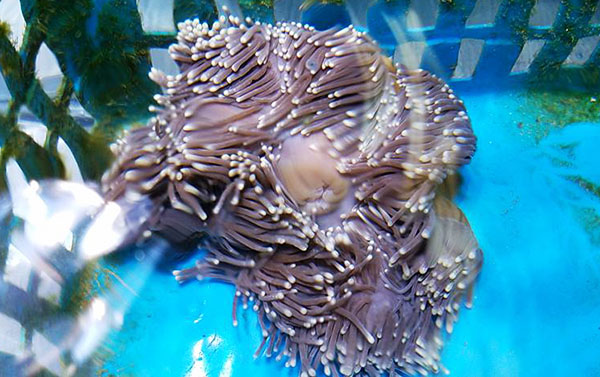
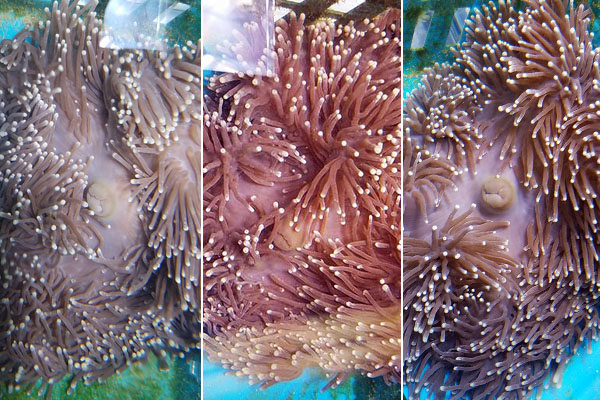
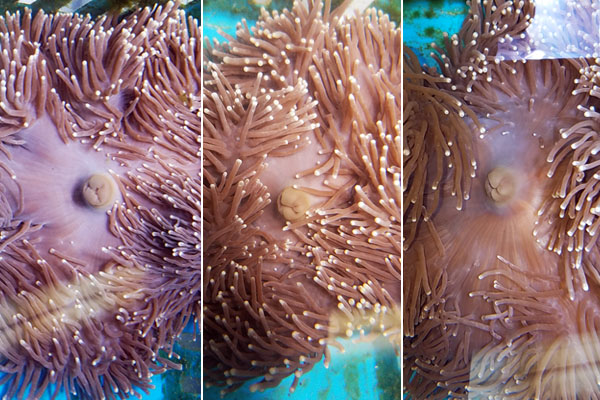
After the treatment was completed, I shut off the wavemaker and transferred the anemone to my 125-gallon display tank on a pedestal. I set this up specifically so the Heteractis magnifica would be close to the surface of the water where it would receive the maximum PAR and highest exposure to flow.
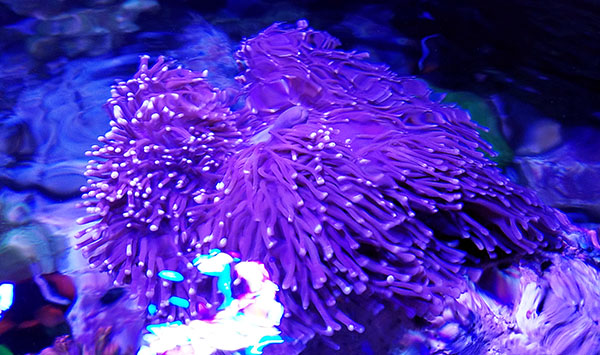
A tip for maintaining a healthy anemone: Feed some high-protein foods (shrimp, scallops, silverside pieces, etc.), cut to the size of its mouth, once to twice per week.
Summary
This is a great method for curing anemones of bacterial infections, and I want to thank Minh and others who have contributed to discovering this and shared their experience. My experience is just another data point to show that it works, and I hope more people will be aware and use this method to prevent unnecessary losses of prized specimens.
